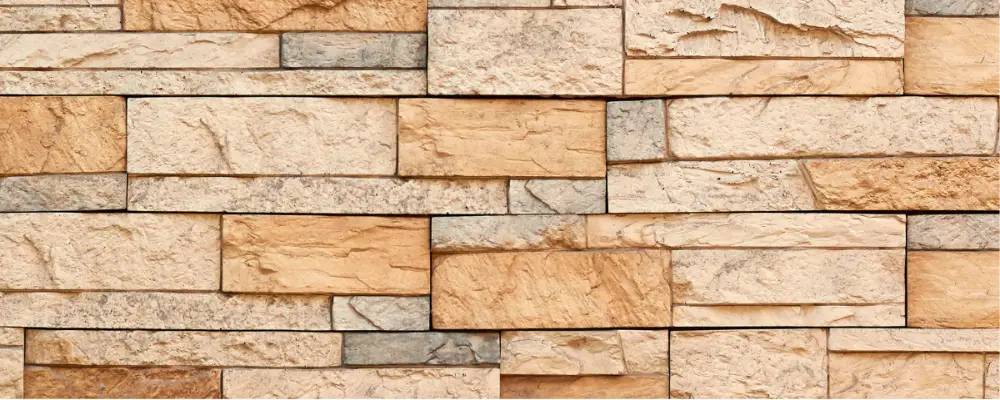Have you ever noticed the neat grooves carved into stone edges in buildings? That is throating in stone masonry, a clever technique to protect walls from water damage. It involves cutting small channels along stone edges to redirect rainwater, keeping walls dry and strong. This age-old method not only adds durability but also improves the structure’s design. Read on to know more about this technique in detail.
What is Throating in Stone Masonry?
Throating in stone masonry is a practical technique used to protect walls from rainwater. The process involves carving a small groove or channel on the underside of stone slabs like window cornices or coping stones. This groove acts as a barrier and helps in preventing rainwater from flowing back onto the wall surface. Instead, the water drips off at the edge of the stone and keeps the wall dry.
This method is crucial for buildings because it stops water from seeping into walls. Without it, walls could develop dampness, cracks, or other structural problems over time. Throating is often found in traditional and modern masonry work because of its effectiveness.
While the groove may seem like a small detail, it plays a big role in maintaining the durability of stone structures. Throating helps redirect water away from walls, preserving the building’s strength and appearance. It is an essential feature in quality masonry due to its practicality and effectiveness.
Techniques for Throating in Stone Masonry
Throating in stone masonry requires precision and proper tools to ensure effectiveness. The technique involves marking the stone where the groove will be cut. This is commonly on the underside of a slab, like a coping stone or window sill. The groove is cut in a straight line with a chisel or specialised cutting tool. It is made deep enough to break the flow of water effectively.
The depth and width of the groove depend on the size and purpose of the stone. Generally, a V-shaped or semicircular groove is preferred, as it effectively prevents water from reaching the wall. The edges of the groove are smoothed to ensure a clean finish and proper functionality.
Regular checks are important to maintain the groove’s efficiency. Repairing any damaged or worn-out grooves ensures that the technique continues to protect the building from water damage over time.
Applications of Throating in Stone Masonry

- Window Sills and Cornices: Throating redirects water away from the wall and helps prevent dampness and water damage to the structure.
- Coping Stones: Used on top of walls, throating helps protect parapet walls and roofs by preventing water seepage.
- Door Thresholds: When stone strips are used as door thresholds, throating keeps the area beneath the door dry and prevents water from entering the building.
- Balustrades: Balustrades channel water away from the joints between stone pieces, thus reducing the risk of erosion and damage.
- Garden Walls and Fountains: Throating helps divert water from vulnerable areas to protect the stone and prevent damage.
- Retaining Walls: Throating helps prevent water buildup behind the wall, reducing pressure and preventing cracks or shifts.
- Modern Architecture: Throating is also used in modern stone designs, combining aesthetics with practical water management.

Throating is a versatile technique that protects the integrity of stone structures in various applications. It helps maintain durability and extend the lifespan of the stone.
Benefits of Throating in Stone Masonry
Throating in stone masonry offers several important benefits that help maintain the durability and appearance of buildings. The following are the key benefits:
- One main advantage is protection against water damage. It helps direct rainwater away from walls and stops water from penetrating the stone. This helps avoid dampness, cracks, and structural damage over time.
- Another benefit is enhanced longevity. Throating helps preserve the stone’s condition and reduces damage caused by water exposure. This can significantly extend the lifespan of stone structures.
- Throating also aids in maintaining the structural integrity of buildings. It reduces the risk of erosion, especially in areas like window sills, cornices, and coping stones.
- Additionally, throating adds a decorative element to masonry. The grooves improve the overall design and give the stone a neat, polished appearance while providing functional protection.
This technique is simple but highly effective in preserving the strength and aesthetics of stonework.
Common Mistakes in Throating and How to Avoid Them
- Incorrect groove depth: If the groove is not deep enough, it won’t effectively redirect water, leading to potential damage. Ensure the groove is carved deep enough to break the water flow.
- Improper alignment: An improperly aligned groove may allow water to seep back into the walls. Always check the groove alignment and ensure it runs straight along the stone edge.
- Uneven groove width: A groove that is too narrow may not channel water properly. Make sure the groove is wide enough to allow efficient water flow.
- Neglecting regular maintenance: Over time, throating grooves can accumulate debris, leading to reduced effectiveness in redirecting water properly. Regular cleaning and inspection help maintain the groove’s functionality.
- Using incorrect tools: Using inappropriate or blunt tools can lead to poorly carved grooves. Ensure the proper chisels or cutting tools are used for a precise and clean cut.
Conclusion
Throating in stone masonry is a simple but effective technique for protecting buildings from water damage. Channeling rainfall away from walls minimises moisture and cracks, extending the lifespan of stone structures. Throating also improves the aesthetic appeal of brickwork, giving it a clean, polished appearance. When used appropriately, this technique provides durability and preserves the building’s integrity, making it a vital aspect of both traditional and modern brickwork.
FAQs
Throating is commonly used in masonry on window sills, cornices, coping stones, door thresholds, garden walls, balustrades, and retaining walls to prevent water damage and enhance durability.
Tools used for throating in stone masonry include chisels, specialised cutting tools, and grinders, which help carve grooves into stone surfaces accurately.
Yes, throating is necessary for modern construction as it helps prevent water damage, maintains the structural integrity of buildings, and extends the lifespan of stonework.

